Festool Domino Accessories for Imperial Woodworkers
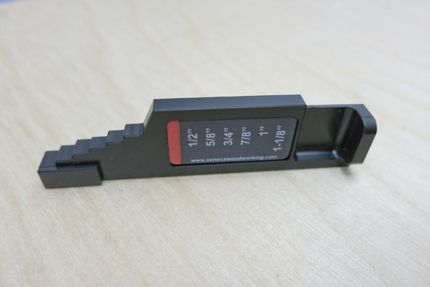
Also of great interest to me was the imperial thickness gauge for the DF 500.
In Fine Woodworking issue 242, furniture maker Tim Celeski outlined the way in which the Festool Domino joining system changed the way he makes furniture. What’s more–Celeski outlined a variety of jigs, tips, and techniques designed to make working with this ingenious tool fast and easy.
In a previous post, blog post, Celeski covered his shopmade set-up blocks which help him in dealing with the Domino’s metric measurement system. Now in this follow-up post, Celeski reports on some useful new accessories for this new breed of power tool.
–Fine Woodworking Editors
Festool Domino Accessories for Imperial Woodworkers
Guest post by Tim Celeski
When first using the German made Festool Domino DF 500 and DF 700 you’ll quickly notice that their various settings scales and settings are metric rather than imperial based. Having some of the settings like depth or width of cut in millimeters aren’t a problem, but I’ve found that living with the stepped height or thickness gauge in metric form when dealing with wood in common imperial based finished thicknesses (ie 3/4″, 1″, 1-1/4″, 1-1/2″, etc.) to cause plenty of problems.
|
|
To work around this I made some setup gauges out of scrap wood that would center the Domino’s cutter on various thicknesses of wood I commonly use. I covered the details in a previous blog post. These do work well, but they are kind of fussy to make just right and aren’t as nice as an Imperial height gauge.
Turns out there are excellent ready made solutions. Seneca Woodworking makes a number of accessories for the two Dominos. While writing this article I borrowed some samples to try out.
For the Domino DF 500 they make the Domiplate which is a CNC milled piece of aluminum that attaches to the bottom of the fence. With this in place the Domino cutter is set to exactly center the cutter on nominal thicknesses of 3/4″ and 1/2″ plywood. You just flip the plate over to center the cutter. This works well. In a production cabinet shop I can imagine that this would be really handy.
For the larger DF 700 they have a similar solution with the Domi-Shims which are a set of two shims that attach under the fence to deal with 3/4″ and 1/2″ plywood. This, too works well.
Also of great interest to me was the imperial thickness gauge for the DF 500. The metric gauge is held in place with one screw so it’s quick to replace it with Seneca’s. This makes it easy to quickly dial in the Domino for thicknesses with steps for 1/2″- 1-1/8″ stock.
Ryan Wenner of Seneca has also developed a set of gauges to work with DF 700. I got to try out a prototype height gauge for centering the Domino on wood that’s from 1-1/4″ to 2-1/4″ thick. And, he’s got a set of two height gauges with smaller increments that’s for wood that’s 1-1/4″ to 3″ thick. Why so thick? It’s important to note that there’s a difference between the height gauges for the DF 500 and the DF 700. Whereas the DF 500 gauges measures the entire height of the board, the gauge on the 700, either metric or Imperial measures from the center of the board to the height of the fence. As a result the gauges on a DF 700 showing 1″ are 1/2 of the height of a 2″ board.
Imperial based furniture makers like myself will be quite happy to have these ranges well covered. However, it sure would be great to cover the sizes from 5/8″ thickness to 1″ thickness. Much of this is the tool’s bit clearance limitation. Turns out that there’s a way to do this–to a degree at least. By combining the Seneca Imperial Height Gauges with the DF-700’s 1/2″ Domi-Shim that mounts underneath the fence. you can actually center on 3/4″ and 1″ stock.

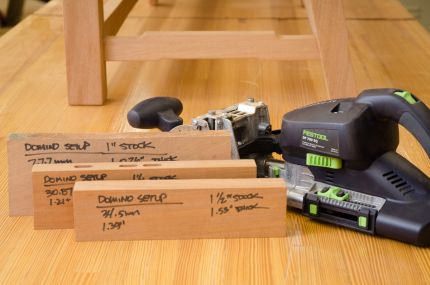
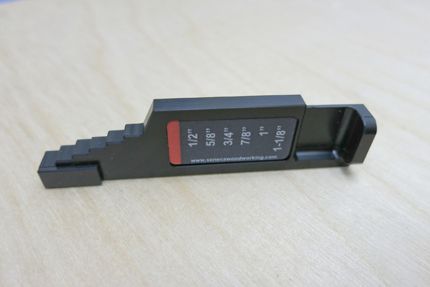
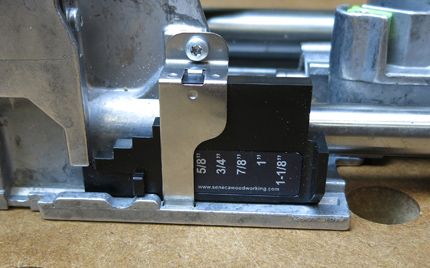
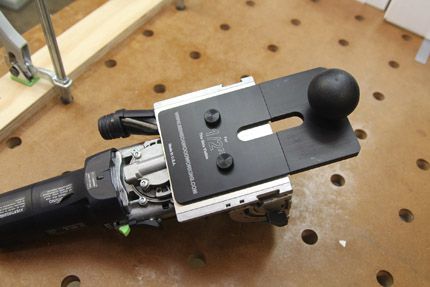
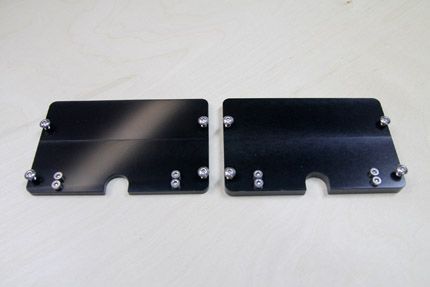



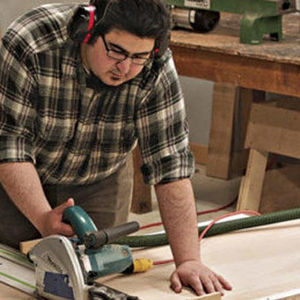
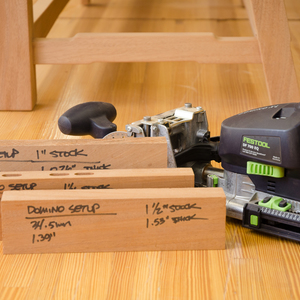
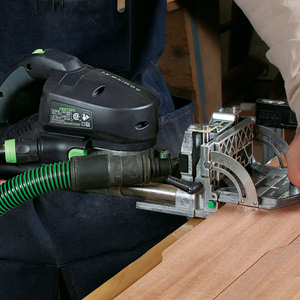











Log in or create an account to post a comment.
Sign up Log in